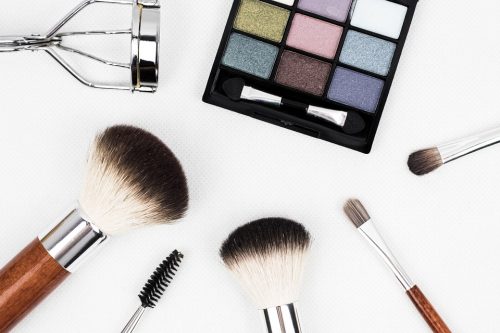As individuals, we are wired to seek out appealing physical attributes. That no matter what cultures we live in, we value its importance. That is particularly following “appreciation” and “first impression.” That is the reason a lot of us want to look good all the time. We run our daily routines in keeping our skin glow, making our body fit, maintaining better hygiene, and so on. “Cross-cultural research has demonstrated worldwide variations in what is physically appealing,” said Theresa E DiDonato PhD. And though there is a wide variation of what physical appeal should look like, our beauty roots in personal perspective. As a psychologist, I believe we have the physical characteristic that is generally the marker of beauty based on how our mind perceives it. That particular thing has become the target of modern cosmetics where there is an evolutionary standpoint of beauty. It is none other than our face.

Beauty And Makeup
Human’s physical preferences already reached its evolution over a million years ago. There are upgrades everywhere. But the most common thing that supports beauty from centuries up to present is makeup. While we may not entirely understand how the thing works on most ideal ways, we know it is working perceptually. Meaning, it changes everybody’s perception of someone’s face. Usually, it supports a positive alteration through its direction. By targeting the facial cue, a clear judgment of healthiness and beauty appear. That is because makeup enhances facial contrast where it affects skin coloration. Thus, it makes us appear healthier.
Wearing makeup can alter a human’s perception significantly. That is expressly on a woman’s personality. Some studies show some men see women wearing makeup as prestigious individuals. Some of them also think that some of those women with makeup are dominant. Though there is not much evidence to support the claim, the overall societal view aggresses to it. Dale Archer, MD adds: “when we meet someone new a first impression is first about looks; only later do things such as personality, brains and character start to take on meaning.”

The Psychological Use Of Makeup
Beauty caters a wide range of description. However, if you haven’t noticed, most women do not like to leave their home without makeup on. So why is that? Research shows that there are two psychological reasons why most women chose to put on makeup before leaving the house.
One reason is camouflage. It is a process where women try to hide their insecurities and anxiousness behind a beautifully covered face. They want the facial imperfections to become unnoticeable, so they begin to see makeup as a necessity. That is fair enough for those women who somehow suffer from emotional issues as well as experiencing lowered self-esteem. Makeup can potentially create an alter-ego for women to help them face the world without showing weakness and focused-imperfections.
The second reason is the seduction/attraction. “Women who wear makeup are judged to have a greater interest in men, to be more promiscuous, and to have a less restricted sociosexuality (which is just jargon for an interest in and approval of short-term uncommitted sexual relationships),” said Robert Burriss, PhD. The use of makeup falls in the category of seduction or attraction because it primarily enhances facial attractiveness. For these types of women who think the opposite, makeup is something they consider as an option. These women use it only to boosts their self-confidence. They believe that when they get covered with it, they tend to become more assertive and friendly.
Four cosmetic products add a psychological basis to makeup use. First is the blush. A pink tint on the cheeks makes a person glow and look young. Then there is mascara, eye shadow, and eyeliner. These eye essentials create a more attractive look by changing the depth of colors around the eyes. Another one is lipstick. It increases the color contrast of the mouth, especially when its color is red. Lastly, there is the contour. It creates symmetrical and sharpened facial angles.

Insight
In a woman’s face, the parts that receive the most attention are the eyes and lips. The color contrast around the two features creates an appealing balance all over the whole facial area. With that kind of balance, the more feminine and attractive a woman gets. That explains why eye shadows and lipsticks are the makeup staples that most women would often want to have. And since people view the face as an instant reflection of personality and beauty, its symmetry is valuable. Meaning, less facial variations the face has, the more attractive it becomes to the human eyes. Thus, since makeup even skin tones and creates contour and eyeliner and lip liner can make the eyes and lips symmetrical, it becomes reasonable why cosmetics are in demand in the market.